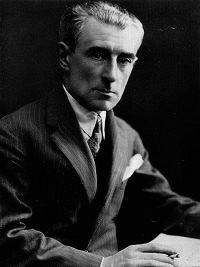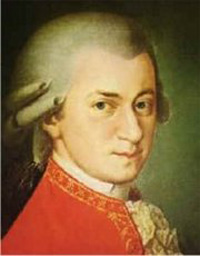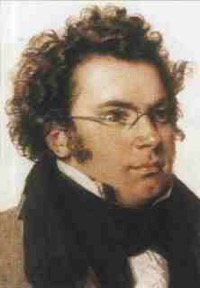| SEASON FINALE AT SOUNDWAVES | ||||||||||
Le tombeau de Couperin If Maurice Ravel had not been deemed unfit for military service at the outbreak of World War I, he would likely have joined the hundreds of thousands of his countrymen as a victim of German shrapnel, poison gas or disease. Instead, he enlisted in the medical corps where he cared for the wounded and worked on a French Suite in memory of his patients who had died. By the time he could get around to finishing the suite in 1917, his mother had died as well, and he renamed it Le tombeau de Couperin. The word “tombeau” literally means “tomb,” but in this context is a poetic eulogy. In seeking a fitting tribute to his French comrades, Ravel harked back to the Baroque dance suite, a form that had originated in France, and to François Couperin “Le Grand.” (1668-1773), the greatest and most prolific member of a dynasty of French composers. Couperin was primarily a composer for harpsichord, who had honored his own predecessors, Jean-Baptiste Lully and Arcangelo Corelli with musical tombeaux. As a musical tribute, as well as a personal one, Ravel composed the original version of his suite for piano. The premiere of the piano version in 1917 had to be postponed because of a bombardment of Paris, and in the interim Ravel orchestrated four of the six movements for chamber orchestra. A master orchestrator, whose transcription of Mussorgsky's Pictures at an Exhibition still beats out all competing arrangements, Ravel wove a delicate orchestral texture with a large number of solos, giving Le tombeau de Couperin the character of a concerto for orchestra. The two movements left un-orchestrated were the fugue  – perhaps the most melancholy of the movements – and the toccata. – perhaps the most melancholy of the movements – and the toccata.  Although neither are actually dances, they are both common Baroque forms primarily – but not exclusively – associated with the keyboard. Although neither are actually dances, they are both common Baroque forms primarily – but not exclusively – associated with the keyboard. Le tombeau, however, is by no means a slavish imitation of a Baroque suite. Instead of the slow, stately prelude – originally conceived so that Louis XIV, an exceptional dancer, could make an appropriate balletic entry – Ravel’s Prélude seems to bubble over with excitement – and no little anxiety since the opening oboe solo is a classic audition piece.  Nor is the work in any sense funereal. This is a celebration of all that was great in French culture. Ravel also replaced the standard dances, allemande, courante and sarabande that formed the Baroque suite with three less common dances movements of the period: forlane Nor is the work in any sense funereal. This is a celebration of all that was great in French culture. Ravel also replaced the standard dances, allemande, courante and sarabande that formed the Baroque suite with three less common dances movements of the period: forlane  , minuet , minuet  and rigaudon. and rigaudon.  Le tombeau de Couperin pinpoints a psychological change in Ravel. Accustomed to suppressing his feelings under a veneer of irony and wit, he became deeply depressed by both his personal loss and the horrors of the war. He expressed his mood not through musical hand wringing or sentimentality, but rather with a creative brush that honors the past but recasts it in contemporary and forward-looking guise, asserting a creative force that presses onward even in the face of adversity. Beginning as early as 1923, Ravel became afflicted with Pick's atrophy, a degenerative neurological disease of the left side of the brain that destroys the ability to remember words, read and write; yet for 9 years he was still able to think musically and compose, illustrating the distinction between the left and right hemispheres. | ||||||||||
Violin Concerto No. 5 in A major, K. 219, “Turkish” There is some controversy among scholars as to whether Mozart himself was the soloist in the first performance of his A major Concerto, but there is no question that he was a master violin player. In fact, his father, Leopold – ever the "backstage mom" – was frequently after him to show off his skills by writing a virtuoso concerto for the instrument. When Wolfgang did finally knuckle down and write concerted pieces for the violin in 1773-75, he wrote a bunch of them; his five concerti are only 12 Koechel numbers apart. At that time, Mozart was in Salzburg in the service of Archbishop Hieronymus Colloredo, for whom he both composed and served as first violinist in the court orchestra. Colloredo was a strict taskmaster and had no truck with his young musician, however talented. Although Mozart was more than seven years in the archbishop’s employ, he spent nearly three of them on furlough, performing around Europe and none too diplomatically looking for another job. He eventually “escaped” to Vienna where he was lionized for a time but never offered the high position in the imperial court that he felt his abilities merited. The A major concerto has a number of unusual features, including a long solo in the middle of the first movement, almost like a melancholy aria for the violin that seems to cancel the momentum of the orchestral exposition.   The first movement in particular has a wealth of themes, making it more of a serenade than a regular sonata allegro form. The first movement in particular has a wealth of themes, making it more of a serenade than a regular sonata allegro form.The Concerto is also known as the "Turkish" concerto. After the opening of the rondo Finale  , Mozart included a diversion in the final rondo of faux Turkish sounding music , Mozart included a diversion in the final rondo of faux Turkish sounding music  similar to the overture to the opera The Abduction from the Seraglio, but more gentle than the finale Rondo alla turca of the finale of the much later Piano Sonata, K.331. similar to the overture to the opera The Abduction from the Seraglio, but more gentle than the finale Rondo alla turca of the finale of the much later Piano Sonata, K.331.  & &  Although bearing little resemblance to authentic Turkish music, this passage is supposed to reflect the jangling, percussive music of the Janissary soldiers of the Ottoman Turks. Many composers of the period were captivated by this exotic orientalism, especially composers of the Austro-Hungarian Empire, whose eastern borders were continually threatened by their Ottoman neighbors. Among the most famous examples is the second movement of Franz Josef Haydn’s Symphony No. 100, the “Military.” Although bearing little resemblance to authentic Turkish music, this passage is supposed to reflect the jangling, percussive music of the Janissary soldiers of the Ottoman Turks. Many composers of the period were captivated by this exotic orientalism, especially composers of the Austro-Hungarian Empire, whose eastern borders were continually threatened by their Ottoman neighbors. Among the most famous examples is the second movement of Franz Josef Haydn’s Symphony No. 100, the “Military.”Despite his proficiency on the violin, Mozart left no written cadenzas, although it is more than likely that he would have improvised them in concert. | ||||||||||
Symphony No. 5 in B-flat major, D. 485 In the half century after Franz Schubert’s death, his reputation rested almost entirely on his wonderful Lieder while the rest of his music was mostly neglected. None of his orchestral music was published during his lifetime, and the first six symphonies were not published until 1884-85 in the Gesamtausgabe, the complete edition of his works. In 1816 Schubert was persuaded by his friend Franz von Schober to give up his position as a teacher in his father’s school to strike out on his own as composer. As the prospect buoyed his outlook on life, the Symphony No. 5, with its lighthearted spirit reflected his mood. At the time, Schubert was under a Mozart spell, brought about by listening to one of the late composer’s string quintets. He wrote in his diary on June 16: “…O Mozart, immortal Mozart, how many, oh how endlessly many such comforting perceptions of a brighter and better life hast thou brought to our souls!” The Symphony reflects his musical infatuation, eschewing the “modern” Beethoven orchestra – which he had used (minus trombones) in his four earlier symphonies – for a lighter classical sound, with only one flute, and without clarinets, trumpets, trombones or timpani. He composed it for a small ensemble of friends who rehearsed new music in the salon maintained by Otto Hatwig, composer and violinist at the Vienna Burgtheater. The Symphony was performed at a meeting of the salon in the fall of 1816, the only time Schubert heard the work. After the composer’s death, The manuscript disappeared; the orchestral parts were rediscovered in the early 1870s through the detective work of George Grove, founder of the great Dictionary of Music (whose updated version is the definitive musical encyclopedia in the English language) and Arthur Sullivan (of Gilbert and Sullivan), who came to Vienna to hunt for Schubert manuscripts. Its first public performance finally occurred in 1873 in London. In terms of musical form, however, there are few surprises. Schubert’s debt to Mozart occurs in the first movement, where he omits a slow introduction. Mozart had pioneered this innovation, while Haydn nearly always used one. Beethoven dispensed with it in five of his nine symphonies. All of the musical motives employ the same little dotted rhythmic figure.  It appears in each theme in a slightly different context, but together, the first theme, It appears in each theme in a slightly different context, but together, the first theme,  the bridge theme, the bridge theme,  which takes the Symphony into a new key, and the second theme which takes the Symphony into a new key, and the second theme  all employ it. The development is all about this little motive, but instead of a dotted figure, Schubert adds a sixteenth note instead of the dot. all employ it. The development is all about this little motive, but instead of a dotted figure, Schubert adds a sixteenth note instead of the dot.  Schubert ranks among classical music’s greatest masters of melody, along with Antonín Dvorák, and nowhere is his gift more apparent than in this symphony. Like his great Czech counterpart, he was also able to create the most poignant harmonies to accentuate the melodic line. The second movement, marked Andante con moto, is a stunning example with its emotionally neutral cantabile.  & &  As the movement continues the little melody is expanded and accompanied by increasingly heart-wrenching harmonies. As the movement continues the little melody is expanded and accompanied by increasingly heart-wrenching harmonies.  Another surprise occurs in the third movement, which again diverges from the Mozartian model by using a scherzo and trio instead of a minuet. This innovation, first used by Beethoven, had by 1816 wholly supplanted the older form. Schubert’s first melody for the scherzo begins with minor ascending triad that immediately returns to the starting note.  By contrast, the trio opens with a descending major triad. By contrast, the trio opens with a descending major triad.  The finale operates in an almost identical way as the first movement. A jolly first theme  gets virtually drenched by a thundering bridge passage, gets virtually drenched by a thundering bridge passage,  which rapidly clears for a limpid second theme. which rapidly clears for a limpid second theme.  A short but stormy development propels the Symphony to its conclusion. A short but stormy development propels the Symphony to its conclusion.With the exception of the second movement, the Symphony No. 5 is a delightful, but not deep work. It reveals the composer’s youthful enthusiasm and consummate skill, with a hint of the emotional intensity and greatness that emerged as he raced the clock to his early death. | ||||||||||
| Copyright © Elizabeth and Joseph Kahn 2018 | ||||||||||


